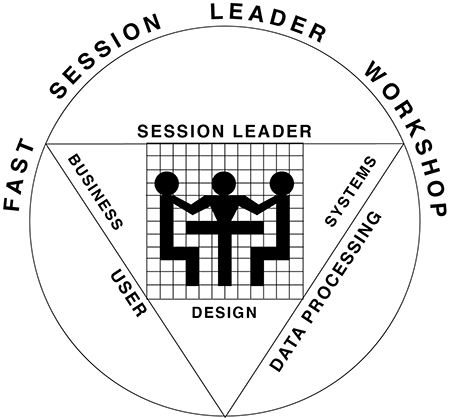August 1997

Graphic Brainstorming - Pictures at a Workshop | Gary Rush, IAF CPF
Introduction
One of the objectives of the facilitator is to enable communication. We use our senses of sight and sound to communicate. We interpret what we see and hear - but each one of us interprets it differently. If one person has a "vision" of a business, that "vision" is buried in the back of the mind - an image that is different from the image that is in the back of the mind of the next person. To illustrate - if you heard me say "building" - what pops into your mind? Is it a verb? Is it a noun? Is the building two stories, three stories, a skyscraper, a house? Words leave much to the interpretation of the person hearing them. If we draw pictures to help, then we are using more senses and we are more concise.
Why is it important?
Graphic brainstorming takes advantage of the saying "Pictures are worth a thousand words". Images help us communicate and cross cultural boundaries (international road signs are symbols - not words). Calling it a "house", "casa", or "maison" is unimportant if we understand that we are talking about a:

Other examples include blue-prints, maps, and analytical models. All of these can be described using words - yet none are effective unless documented with their graphics.
Graphic Brainstorming
Graphic brainstorming is a process developed over many years by people such as Arthur Young and David Sibbett. They studied thought processes and the life cycle of idea generation and defined seven graphic formats for communication and idea creation based on process theory. The formats take people from conception through analysis and finally commitment to an idea. The different graphic formats are useful at different stages of a workshop. The seven formats are:
- Poster - a central theme
- List - a sequenced list of ideas
- Cluster - arranged collection of ideas
- Matrix - a forced comparison of ideas
- Diagram - a model of an idea
- Drawing - an image of the idea
- Mandala - a unifying, centered image
Each format provides the facilitator with a tool to help the group communicate and move through the process of understanding and commitment.
Many facilitators are afraid to use graphics because they don't feel artistic enough or don't know how to incorporate them into the workshop process. Others feel that graphics are not "real work." Unfortunately, we have been taught to "stay within the lines." In workshops, drawing a stick figure is just as effective as drawing a well-proportioned figure. The purpose is to communicate. We need to express ourselves and know that content is more important than presentation - in a workshop. Facilitators need to become comfortable both drawing the images or using the graphics in brainstorming as well as asking the participants to draw out their ideas. Learning some simple techniques and becoming comfortable drawing simple lines and circles helps us find the "child within" to permit us to use graphics.
Graphics and Workshops
Graphics are important elements of many workshops. It is not enough to be comfortable drawing pictures. One key problem with graphics and workshops is "When do I use them and How?".
Knowing which graphic format to use when is important for a facilitator. Using a matrix to define a vision is ineffective. Using a drawing to identify roles and responsibilities becomes too complex. The graphic is a means to an end. Knowing the end and finding the appropriate means makes for a more effective workshop. Knowing that graphics help people think through problems, helps develop workshop agendas.
As a facilitator, I use a lot of graphics. I will explore which formats to use for which purpose in upcoming newsletters. I presented these concepts at the IAF conference in January, 1998. ![]()

